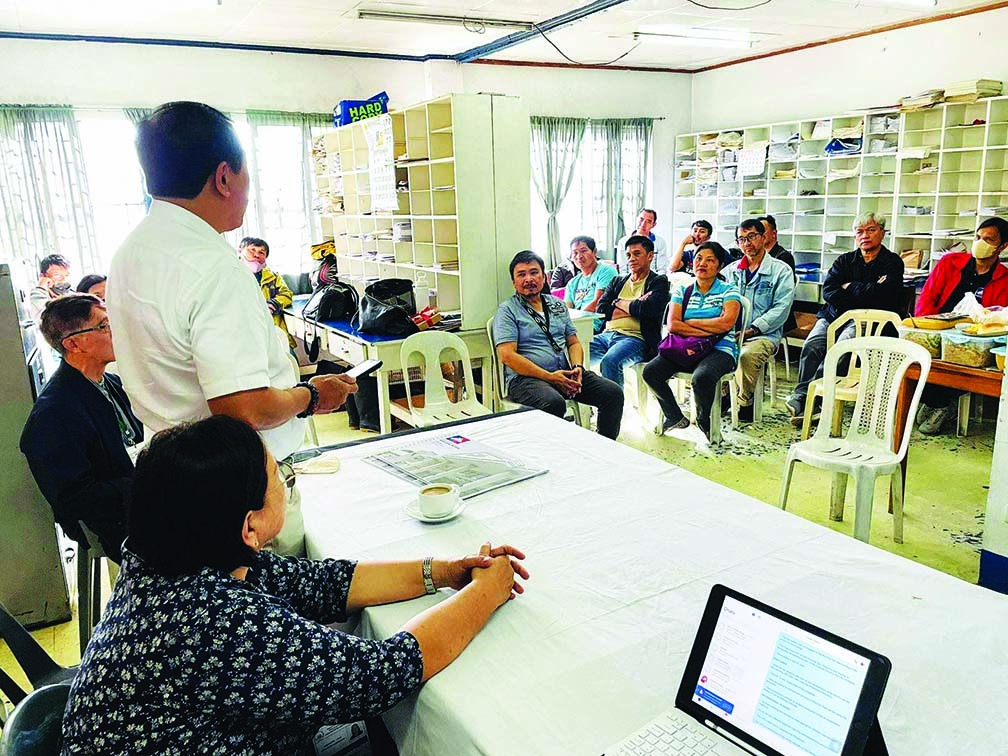Mastering the 4Rs— Reliability, Reach, Relevance and Resiliency
As a member of the Universal Postal Union (UPU)—a specialized United Nations agency that facilitates a uniform worldwide postal system—the Philippine Postal Corporation (PHLPost) accepts and regularly sends letters and parcel post items to 192 countries around the world.
Domestically, PHLPost serves every city and municipality in the country through post offices as well as postal stations in commercial and rural areas.
In recent years, however, the rapid progress of technology and consequently, the private courier service, has dented the PHLPost’s competitiveness in the mail and parcel service.
With interest in the traditional mailing system on rapid decline, PHLPost Postmaster General and Chief Executive Office Luis D. Carlos said that the PHLPost is pushing toward becoming a courier service provider rather than simply delivering mails.

Offering courier services will allow the PHLPost to lift its size restrictions in delivering packages and, over the years, increase the agency’s potential to becoming a major go-to courier services provider, Carlos said.
PHLPOST ADVANTAGE
A 2021 report of Paris-based Organisation for Economic Co-operation and Development (OECD) and the Philippine Competition Commission (PCC) highlighted the role of the state-owned Philippine Postal Corp. (PHLPost) in the delivery industry in the country amid the robust e-commerce sector.
“PHLPost has a public service obligation to deliver letters and parcels, including small packages, throughout the Philippines,” the report said, adding that PHLPost’s strength is its large network across the country that operates both non-express (postal) services and express (courier) services.
Explained Carlos: “Our advantage is that private couriers are usually limited to the main cities. Percentage-wise, if they cover 55% of the main cities, for the remaining 45% of coverage, they are asking us to be the hub because they are starting to lose money when they start to go out of main cities or main areas of coverage.”
In a meeting with Trade and Industry Undersecretary Mary Jean Pacheco, PHLPost was asked to help the courier service industry.
“The private couriers asked us to cover already the areas that they can’t, particularly the hard-to-reach areas, or what we call ‘last-mile’ delivery, since the PHLPost is the only one with that capability,” Carlos said.
With private couriers seeking assistance for the remaining 45% demand for mail and parcel delivery, PHLPost moved forward, devising ways to fix its reach and grow the agency’s reliability as a service provider.
Under Carlos’ watch, PHLPost devised the “Postal Trinity” program, with three major components: Implementing a new ZIP code, improving its postal stations at the local government level, and introducing the Kartero App (K-APP).
The overall direction of the PHLPost’s Postal Trinity program is to strengthen the agency’s reach and reliability insofar as postal services to the general public is concerned.
Its ultimate legacy as a postal institution is to enhance its relevance and resiliency in an environment ruled by rapid advances in communication technology.
NEW ZIP CODE PH
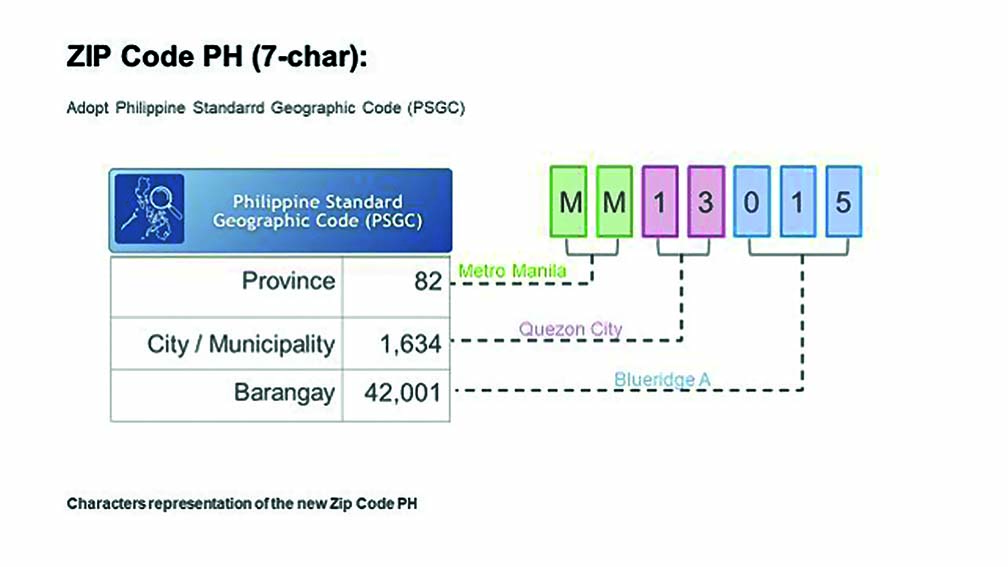

Like in other countries, postal services play an important role in the social and professional lives of its citizens.
The country’s postal system has been around for over 200 years. It began in 1767, when Spain, the country’s first colonial master, established the first post office in Manila. More than a decade later, in 1779, the Philippines became an official postal district of Spain. Its reach has now expanded all over the archipelago.
It was during the American period, when the Bureau of Posts was officially created by the Department of Trade.
Since the 1960s, the Bureau of Posts has implemented the ZIP Code to simplify the distribution of mail.
ZIP stands for Zone Improvement Plan—a set of numbers or digits included in the home address that makes it easier for the postal system to sort mails and packages.
PHLPost uses the ZIP Code to quickly sort the letters, packages, and other mail bound for communities and businesses throughout the Philippine archipelago.
Included in the ZIP Code is the mailing address, which tells the location where the letter or package is to be delivered. Adding the ZIP Code on the address increases the accuracy, sorting speed, and delivery of letters and packages, benefitting the sender and the addressee.
The Philippine ZIP codes are four-digit numbers that signify two things. For Metro Manila, it means a barangay inside a city or, in the case of Manila, the city districts. Meanwhile, outside Metro Manila, it represents a town or city.
INTRODUCING: NEW 7-DIGIT ALPHANUMERIC CODE
Under the new ZIP Code PH, PHLPost will implement a new seven-digit alphanumeric code to standardize the addressing system of mails and parcels all over the country.
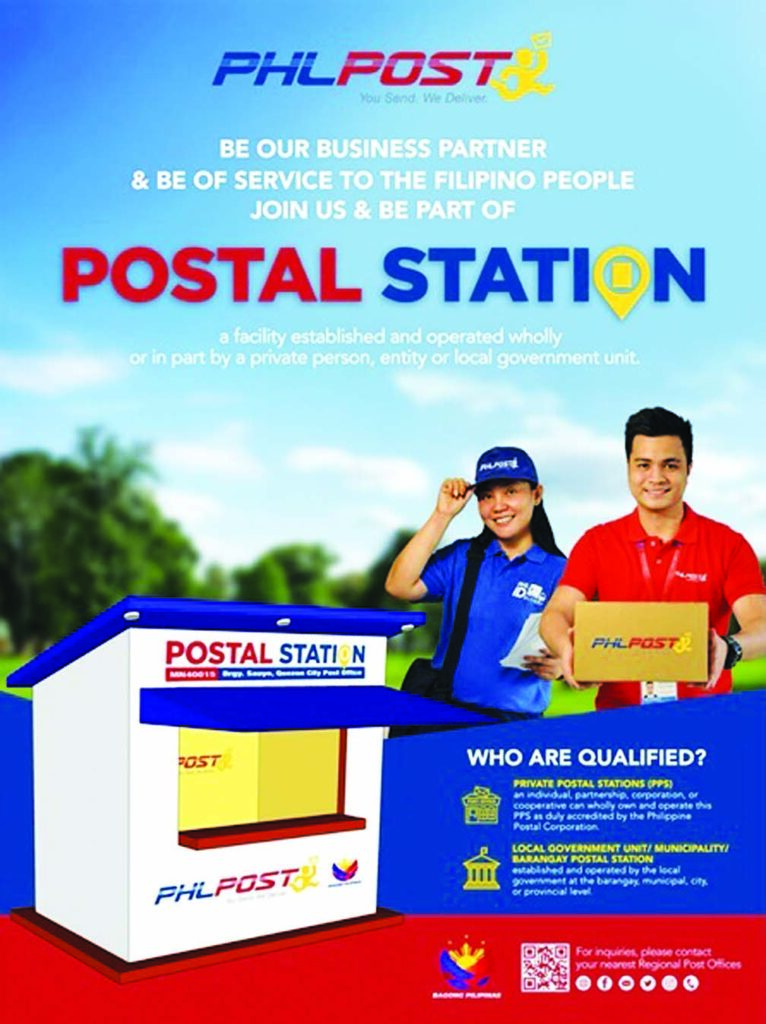

The unique 7-digit code will uniformly apply for every province, city, municipality and barangay. It will make it easier for every Filipino to provide their home or business address.
More importantly, the new ZIP Code PH will enable the full digitalization of logistic companies in the Philippines, based on existing standards of the Philippine Standard Geographic Code (PSGC).
Carlos further elaborated that the first two digits represent the region or province, while the next two will represent the province or the city or municipality, and finally the last three digits represent the barangay.
“We will test Zip Code PH by using it internally at first, but we hope the government will start to pick it up because the basis of this code is the geographic number of the Philippine Standard Geographic Code (PSGC) of the Philippine Statistics Authority (PSA). We didn’t get this out of nowhere. We believe it would be easy to remember those seven digits, plus the fact that it contains complete information that would be easier to identify,” Carlos pointed out.
To illustrate: If a person lives in, for example, Quezon City, then that person’s region is Metro Manila so the first two digits is “MM.” Since the person lives in Quezon City, which is the 13th city in the National Capital Region or Metro Manila, then the Zip Code’s next two digits is the number “13.” Finally, the last three digits will represent the barangay so if the person lives in Blue Ridge for example, which is barangay 015, then the final code will be “MM13015.”
According to Carlos, the 7-digit Zip Code will determine the address quickly and will thus make it easier for Micro, Small and Medium Enterprises (MSMEs), as well as the private couriers.
He explained that even financial institutions will also appreciate this kind of new information because in countries like Singapore, when someone goes to a bank and needs to provide information about himself or herself, they can just type the Zip Code after their name and all other relevant information will become known in an instant.
Carlos further mentioned that ZIP Code PH will work even in marginalized areas. Delivery of parcels and mail will be faster and easier because the barangay postal centers will be the one to deliver the items.
VALUABLE USES OF ZIP CODE PH
ZIP Code PH has useful, wide-ranging applications in market research, risk assessment, health care, political campaigns, emergency response, and logistics.
Zip codes can be used to identify patterns in consumer behavior, which is useful for market research. Companies can use zip codes to determine where their target demographic is located and develop targeted advertising campaigns.
Insurance companies can use zip codes to determine the risk associated with insuring a particular area. Zip codes with higher crime rates or a greater likelihood of natural disasters may result in higher insurance premiums.
Healthcare providers can use zip codes to identify areas where there are high concentrations of people with specific health conditions. This information can be used to develop targeted healthcare initiatives and improve healthcare outcomes.
Emergency responders can use zip codes to quickly identify the location of an emergency and dispatch appropriate resources. This can save valuable time in emergency situations and help ensure a more effective response.
Finally, shipping and logistics companies use zip codes to optimize their delivery routes and ensure that packages are delivered in a timely and cost-effective manner.
LGU POSTAL STATION
On Dec. 3, 2015, PHLPost entered into a Memorandum of Understanding (MoU) with the Department of Interior and Local Government (DILG) toward the establishment of post offices to be operated by local government units.
Five years later, on Dec. 29, 2020, a DILG advisory was released, leading to the creation of the LGU/Barangay-Operated Postal Station.
This new postal scheme lists barangays as postal partners and allows them to deliver mails or parcels in hard-to-reach areas or those areas that may be remotely situated even if they are located in urban centers.
PHLPost will supervise the operation of the postal facilities, in partnership with the LGUs. PHLPost will also provide the marketing equipment and initial stocks as well as training of LGU personnel who will handle the Postal Station.
The LGU/Barangay Postal Station serves as the pick-up and delivery hub for mail items intended for pick up by the addressees. Its list of accepted mail items include: ordinary mail, ordinary mail with proof-of-delivery (POD), registered mail, registered mail with POD, as well as parcels that are more than two kilograms and up to 20 kilograms, and small packets.
INCENTIVES
PHLPost gives these barangays incentives on a per piece basis. There is a 20% rebate from the gross revenue in the acceptance of mails pursuant to the agreement set by PHLPost and DILG.
The LGU/Barangay Postal Station requires no accreditation fees and no annual fees. It provides at “no cost” for the payment of Bureau of Internal Revenue (BIR) registration, training for deputized personnel, and receiving Information, Education and Communication (IEC) materials.
At no cost also to the barangays are post office paraphernalia and equipment, postage rates, Official Receipts, Report and Transmittal Forms, including bags/sacks and labels.
“The barangays are given incentives—the space they use is already paid for. The cost that will accrue to us to be able to deliver in that area, we will just give to the barangay delivery people. It’s really an incentive-based program where we help not just the barangay people but the barangay itself,” Carlos said.
GOOD SET-UP
“I believe this is a good setup since they (barangays) are the ones who are on the ground. They are the better ones to approach since they know who lives in their respective areas. It is all about familiarity that would make the job much easier,” Carlos said.
As a postal partner, barangay stations can accept both parcels and letters. For example, if there’s a Micro, Small or Medium-sized Entrepreneur in a certain area and would want to reach or deliver their product to another area, they can simply bring it to the barangay postal partner.
Carlos elucidated: “We can pass through that barangay in our network and we will be able to send a product, even in far-flung areas.”
He likewise said that their model for the barangay-based postal station is India, where there are about 165,000 village post offices.
PHLPost would like to extend its market to as many settlements in the country pursuant to its universal service obligation of providing postal services to the public, Carlos said.
KARTERO APP OR K-APP

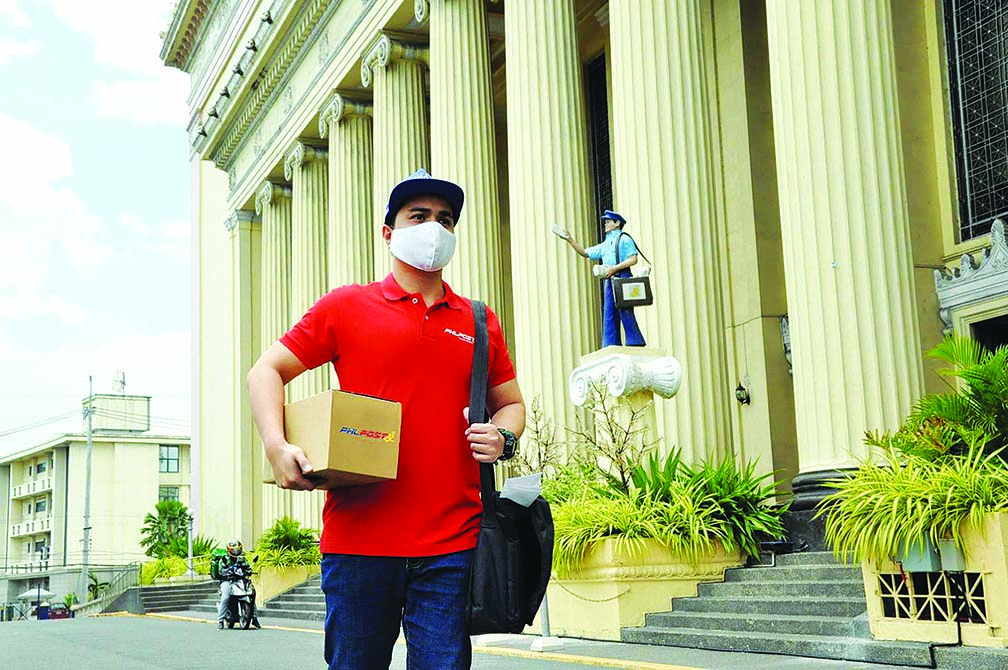
E-commerce has driven major growth in the parcel delivery business using the Express Mail Service (EMS) as a competitive international express product to meet the growing needs of customers.
EMS is PHLPost’s fastest means of sending time-sensitive items to addressees abroad.
To keep pace with the changing communication market, PHLPost is emphasizing the use of new communication and information technologies to shift from what is traditionally regarded as its core services.
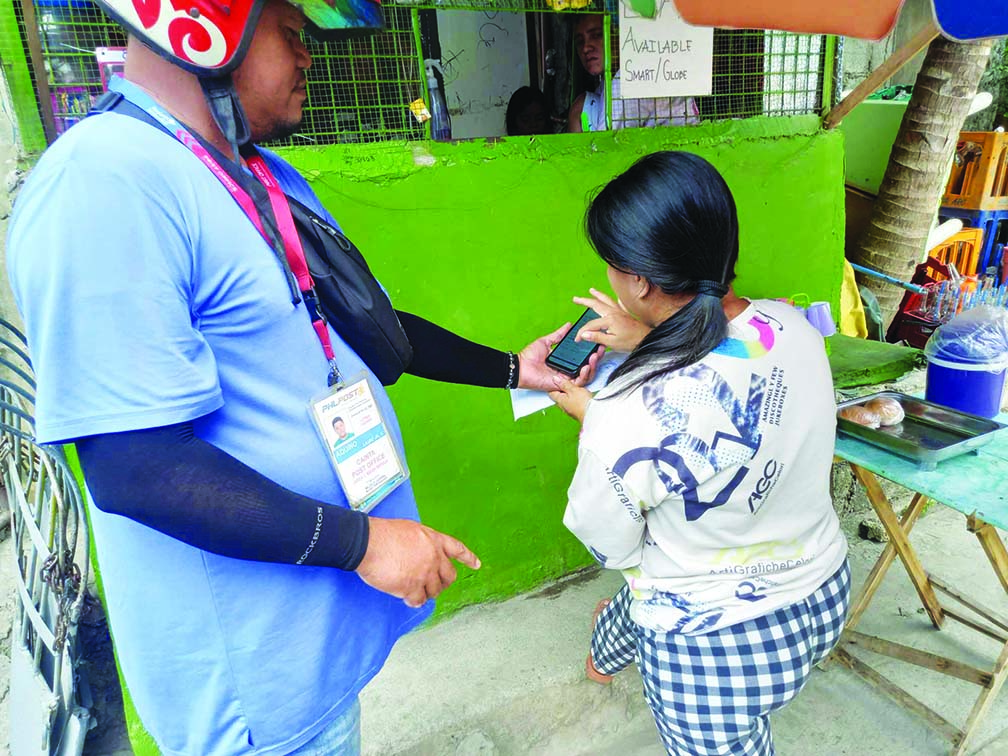
PHLPost said it will expand its capabilities to take advantage of the fast growing e-commerce sector and enable SMEs in rural areas that are not served by private logistics providers to access new markets through e-commerce.
REAL-TIME VISIBILITY
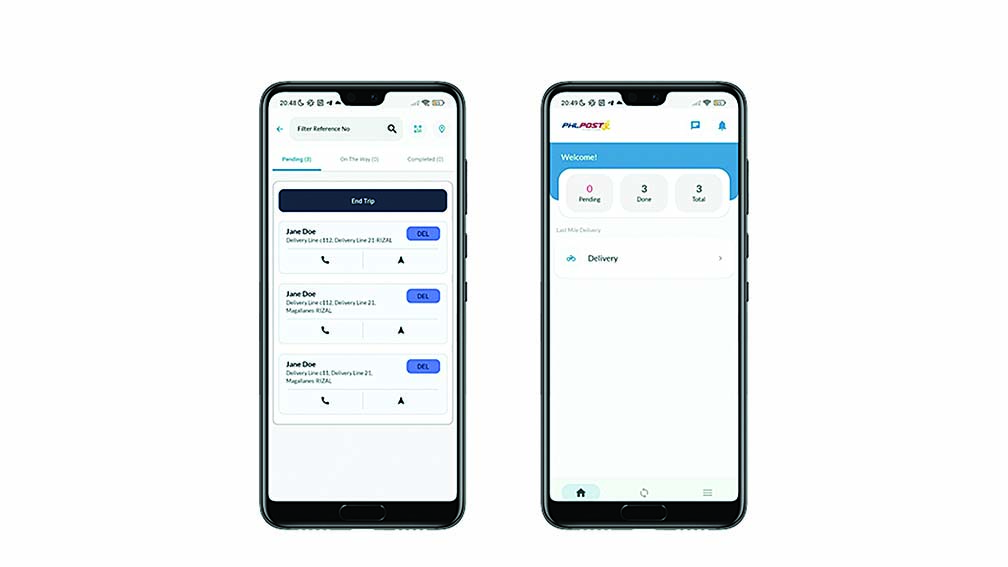
Carlos announced that PHLPost will roll out the “Kartero App” or K-App, a real-time visibility system to modernize the delivery and efficiency of its mail operations.
Providing real-time and reliable delivery information will ensure an enhanced customer experience and improved satisfaction, he added.
Customers can access the App using their mobile phones, a service similar to that offered by private couriers.
Equipped with mobile phones, “Karteros” or Letter Carriers has the Kartero application or K-App to elevate the existing Domestic Postal System (DPS) by seamlessly integrating it with the Last Mile Delivery System (LMDS).
This integration aims to provide clients with real-time and reliable delivery information.
K-App is a mobile application for managing one’s business delivery and pickup services, or any type of business that requires the monitoring of daily activity tasks in real-time.
With just a click, one can, for example, send bills directly to your client. You can automatically send them as an email with a PDF attachmnent.
Kartero-App is paperless and offers easily viewed transaction details. Clients will immediately see the bills electronically.
The K-App also has the capacity to track every document that is sent out to clients.
Carlos bared that PHLPost will procure phones to be used by. The “Kartero” in the real-time visibility function of the App.
PHLPost is also procuring an online feature of the App, which is accessible to Letter Carriers.
Currently, the K-App is rolling out to different postal areas to assist in the PhilID delivery.
TRACKING CAPABILITY
By sending information straight to its servers, the Kartero App is equipped with a tracking capability. It can track every document or file one sends out to clients.

Carlos said that this will enable PHLPost to confirm if a mail or parcel has been delivered. “The Kartero App will help enhance PHLPost’s reliability,” he said.
With Kartero App made functional in the country’s 42,000 barangays, PHLPost will be able to track all items delivered to a barangay postal center.
“Visibility is something that the customer wants, which is what private couriers do. We really don’t have to reinvent the wheel. We just need to change the mindset by doing things that the private sector successfully does and implementing it in providing public service. PHLPost is going to be the prime example for this practice,” Carlos said.
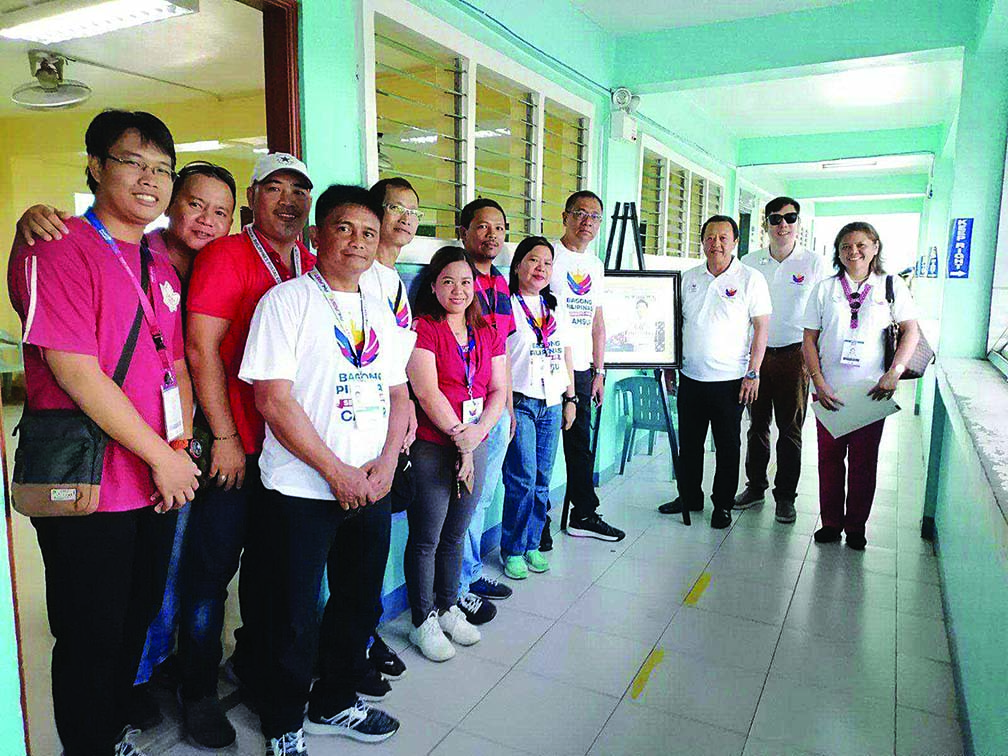
He added: “Our hope is that with this Trinity Program, we will be able to help fix PHLPost’s reliability, reach, relevance, and resiliency. PHLPost will become top of mind already.”
“More importantly, we will be more affordable compared to the competition, which will make us a good choice when sending post or parcel, especially abroad like in the United States. Since PHLPost is a member of the UPU, the United States Postal Service (USPS) will prioritize items sent to the US through a Union member,” Carlos concluded.
